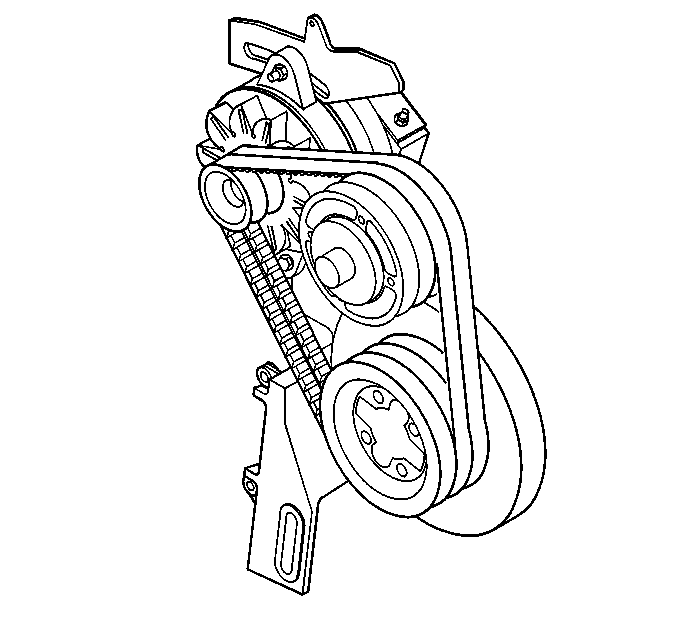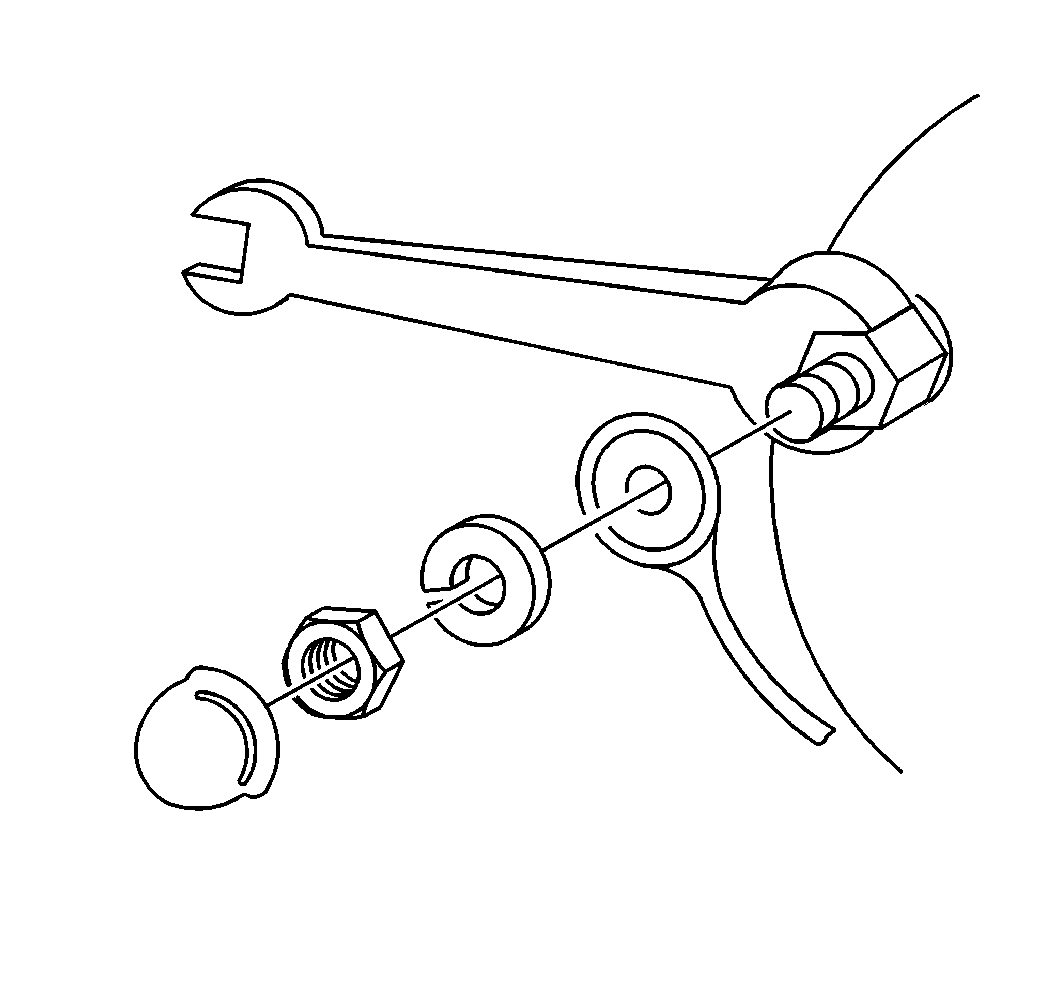Removal Procedure
- Disconnect the negative battery cable. Refer to Battery Cable Replacement .
- Tilt the cab. Refer to Cab Tilting in General Information.
- Disconnect the wiring connectors from the back of the generator.
- Remove the drive belts.
- Remove the generator mounting bolts.
- Remove the generator.
- Remove the generator pulley.
Caution: Unless directed otherwise, the ignition and start switch must be in the OFF or LOCK position, and all electrical loads must be OFF before servicing any electrical component. Disconnect the negative battery cable to prevent an electrical spark should a tool or equipment come in contact with an exposed electrical terminal. Failure to follow these precautions may result in personal injury and/or damage to the vehicle or its components.


Installation Procedure
- Install the generator pulley.
- Install the generator to the mounting bracket.
- Install the drive belts.
- Tighten the generator mounting bolts.
- Connect the wiring connectors to the back of the generator.
- Lower the cab. Refer to Cab Tilting in General Information.
- Connect the negative battery cable. Refer to Battery Cable Replacement .

Important: Replace the pulley of the new generator, if the pulley diameter of the new pulley is not exactly equal to the diameter of the old pulley.
Notice: Use the correct fastener in the correct location. Replacement fasteners must be the correct part number for that application. Fasteners requiring replacement or fasteners requiring the use of thread locking compound or sealant are identified in the service procedure. Do not use paints, lubricants, or corrosion inhibitors on fasteners or fastener joint surfaces unless specified. These coatings affect fastener torque and joint clamping force and may damage the fastener. Use the correct tightening sequence and specifications when installing fasteners in order to avoid damage to parts and systems.
Tighten
Tighten the generator shaft nut to 100 N·m (75 lb ft).

Use mounting bolts in order to secure the generator.

Tighten
| • | Tighten the top mounting bolts to 88 N·m (65 lb ft). |
| • | Tighten the mounting bolts to 88 N·m (65 lb ft). |
Hold the hex-shaped base on the output terminal when you tighten the nuts.
Tighten
| • | Tighten the generator output terminal nut to 12 N·m (100 lb in). |
| • | Tighten the relay terminal nut to 2 N·m (20 lb in). |
| • | Tighten the indicator terminal nut to 2 N·m (20 lb in). |
